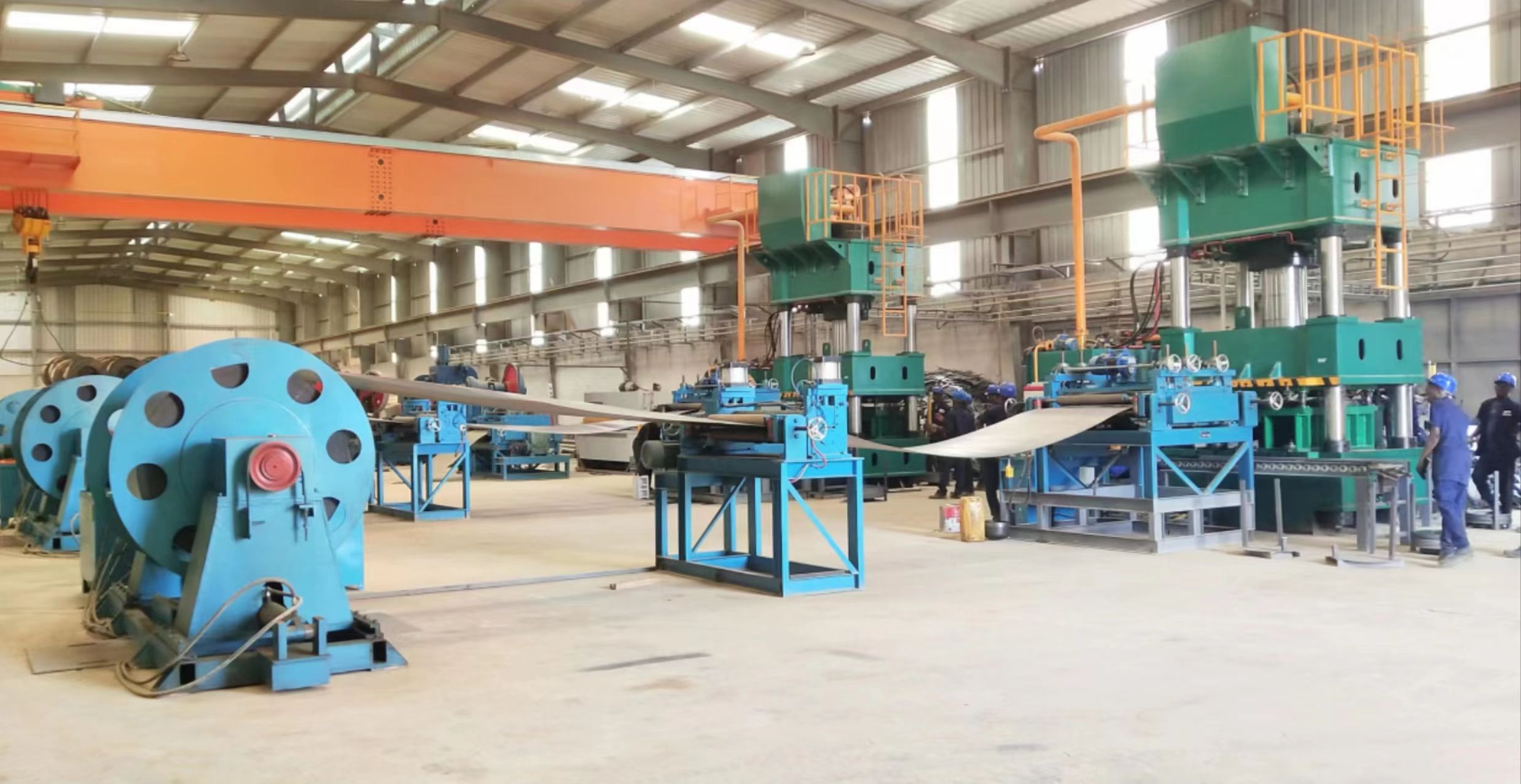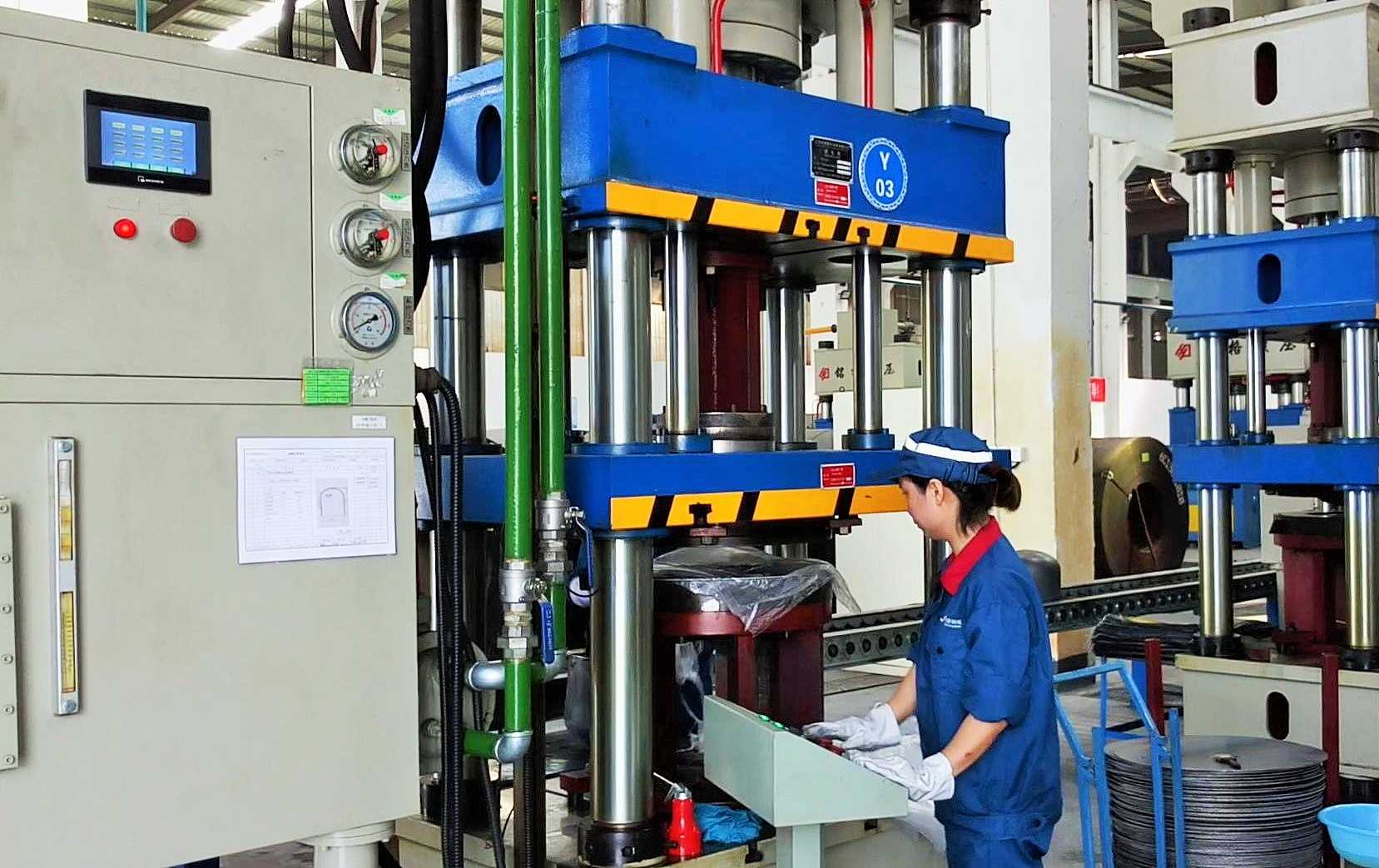In the constantly evolving world of manufacturing, innovation and technological advancement are key drivers of industry progress. Among the many innovations transforming manufacturing processes, the handle forming machine stands out as a remarkable development. Specifically, a new type of shield forming machine, this equipment integrates pneumatic transmission, boasts a compact structure, and offers convenient operation. This article delves into the intricacies of the handle forming machine, exploring its design, functionality, benefits, applications, and future potential.
Introduction to Handle Forming Machines
Handle forming equipments are specialized equipment designed to create handles for various products. These machines are essential in industries such as automotive, construction, household appliances, and furniture manufacturing, where handles are integral components. The newly developed shield forming machine, a type of handle-forming machine, represents a significant leap forward in the efficiency and effectiveness of handle production.
The Evolution of Handle Forming Machines
The evolution of handle-forming machines mirrors the broader trends in manufacturing, characterized by a shift towards automation, precision, and efficiency. Traditional handle forming methods often relied on manual labor, which was not only time-consuming but also prone to inconsistencies and errors. The advent of automated handle-forming machines addressed these issues, providing a means to produce handles more quickly, accurately, and consistently.
The latest iteration of handle forming equipments, the shield forming machine, takes these advancements a step further. By incorporating pneumatic transmission and a compact structure, this machine offers enhanced performance and ease of operation, making it an invaluable asset in modern manufacturing environments.
Components and Design of the Handle Forming Machine
Understanding the components and design of the handle forming equipment is crucial to appreciating its capabilities. The key components of this machine include:
- Pneumatic Transmission System: At the heart of the handle-forming machine is the pneumatic transmission system. This system uses compressed air to generate movement and force, driving the machine’s operations. Pneumatic systems are known for their reliability, ease of maintenance, and ability to deliver consistent performance, making them ideal for handle forming applications.
- Compact Structure: One of the standout features of the shield forming machine is its compact structure. The design prioritizes space efficiency without compromising functionality. This compactness not only saves valuable floor space in manufacturing facilities but also simplifies the installation and integration of the machine into existing production lines.
- Control Interface: The handle forming machine is equipped with a user-friendly control interface, allowing operators to easily set up and adjust the machine’s parameters. This interface typically includes a digital display and touch screen controls, enabling precise control over the forming process.
- Forming Die: The forming die is a critical component that shapes the material into the desired handle form. The design and material of the die are crucial for ensuring the quality and consistency of the formed handles. Advanced handle forming machines use high-quality, durable materials for the die to withstand the rigors of continuous operation.
- Safety Features: Safety is paramount in manufacturing, and the handle-forming machine is no exception. The machine is equipped with various safety features, including emergency stop buttons, protective guards, and sensors to detect and prevent malfunctions. These features ensure the safety of operators and the smooth operation of the machine.
The Role of Pneumatic Transmission in Handle Forming Machines
Pneumatic transmission is a key technology that sets the shield forming machine apart from its predecessors. This section explores the advantages of pneumatic transmission and its role in enhancing the machine’s performance.
- Reliability and Durability: Pneumatic systems are known for their reliability and durability. Unlike hydraulic systems, which can suffer from leaks and require extensive maintenance, pneumatic systems are simpler and easier to maintain. This reliability translates into less downtime and increased productivity.
- Consistent Performance: Pneumatic transmission provides consistent performance, which is crucial for producing high-quality handles. The use of compressed air ensures that the machine operates with the same force and speed, resulting in uniform handles with minimal variations.
- Energy Efficiency: Pneumatic systems are energy-efficient, as they use compressed air, which can be generated on-demand. This efficiency reduces energy consumption and lowers operating costs, making the handle forming machine an economically viable option for manufacturers.
- Precision Control: Pneumatic systems offer precise control over the movement and force applied during the forming process. This precision is essential for creating handles with exact dimensions and shapes, meeting stringent quality standards.
- Ease of Maintenance: Pneumatic systems are relatively easy to maintain compared to other transmission systems. The simplicity of the design means that there are fewer components that can fail, and maintenance tasks such as replacing filters and checking for air leaks are straightforward.

Benefits of the Handle Forming Machine
The handle forming equipment offers numerous benefits that make it an attractive option for manufacturers. These benefits include:
- Increased Production Efficiency: The automation and precision of the handle forming equipment significantly increase production efficiency. The machine can produce handles at a much faster rate than manual methods, reducing production times and increasing output.
- Improved Product Quality: The consistent performance and precision control of the handle forming machine ensure that each handle is produced to the same high-quality standard. This uniformity is crucial for maintaining product quality and meeting customer expectations.
- Reduced Labor Costs: The automation of the handle forming process reduces the need for manual labor, resulting in lower labor costs. Operators can oversee the machine’s operation rather than performing the labor-intensive task of forming handles manually.
- Flexibility and Versatility: The handle forming equipment can be easily adjusted to produce handles of different shapes and sizes. This flexibility allows manufacturers to meet diverse customer requirements and adapt to changing market demands.
- Enhanced Safety: The safety features integrated into the handle-forming machine protect operators from potential hazards. The automation of the process also reduces the risk of repetitive strain injuries associated with manual handle forming.
- Space Efficiency: The compact structure of the shield forming machine saves valuable floor space in manufacturing facilities. This space efficiency is particularly beneficial for manufacturers with limited space or those looking to expand their production capacity.
Applications of the Handle Forming Machine
The handle forming equipment is a versatile piece of equipment with applications across various industries. Some of the key industries that benefit from this machine include:
- Automotive Industry: In the automotive industry, handles are essential components used in doors, trunks, and other parts of vehicles. The handle forming machine ensures that these handles are produced with the precision and consistency required for automotive applications.
- Construction Industry: The construction industry uses handles for a wide range of applications, from doors and windows to cabinets and furniture. The handle forming equipment enables the production of handles that meet the specific requirements of construction projects.
- Household Appliances: Household appliances such as refrigerators, ovens, and washing machines require handles that are durable and aesthetically pleasing. The handle-forming machine produces high-quality handles that enhance the functionality and appearance of these appliances.
- Furniture Manufacturing: The furniture industry relies on handles for cabinets, drawers, and doors. The handle forming equipment provides the versatility to produce handles of various designs and sizes, catering to the diverse needs of furniture manufacturers.
- Metal Fabrication: In metal fabrication shops, handles are often required for custom projects and products. The handle-forming machine’s flexibility allows metal fabricators to produce handles that meet specific design and functional requirements.
Future Trends in Handle Forming Machines
As technology continues to advance, handle-forming machines are expected to evolve further, offering even greater capabilities and benefits. Some of the future trends in handle-forming machines include:
- Integration with Industry 4.0: The integration of handle-forming machines with Industry 4.0 technologies, such as the Internet of Things (IoT) and data analytics, will enable real-time monitoring and predictive maintenance. This integration will optimize production processes and reduce downtime.
- Advanced Automation: Future handle forming machines will feature even more advanced automation, reducing the need for manual intervention and increasing production speed. The use of robotics and artificial intelligence (AI) will enhance the efficiency and precision of the forming process.
- Sustainable Manufacturing: There will be a growing focus on sustainable manufacturing practices, with handle-forming machines incorporating energy-efficient technologies and processes. The optimization of material usage and reduction of waste will contribute to more environmentally friendly production.
- Customization and Personalization: The demand for customized and personalized products will drive the development of handle forming machines with enhanced flexibility and adaptability. Manufacturers will be able to produce small batches of customized handles efficiently, meeting the evolving needs of consumers.
- Enhanced Materials: Advances in materials science will lead to the development of new materials for forming dies and other machine components. These materials will offer improved durability, wear resistance, and performance, further enhancing the capabilities of handle forming machines.
Conclusion
The handle-forming machine, specifically the newly developed shield-forming machine, represents a significant advancement in manufacturing technology. With its pneumatic transmission, compact structure, and convenient operation, this machine offers unparalleled efficiency, precision, and versatility. The benefits of the handle-forming machine, including increased production efficiency, improved product quality, reduced labor costs, and enhanced safety, make it an invaluable asset for manufacturers across various industries.
As technology continues to evolve, the future of handle forming machines looks promising, with further advancements in automation, sustainability, and customization. For manufacturers looking to stay competitive in the fast-paced world of modern manufacturing, investing in handle-forming machines is a strategic decision that promises significant benefits and a strong return on investment.
In conclusion, the handle-forming machine is a testament to the power of innovation and technological advancement in manufacturing. Its ability to produce high-quality handles efficiently and consistently makes it an essential tool for modern manufacturing. As we look to the future, the continued evolution of handle-forming machines will undoubtedly drive further advancements in manufacturing efficiency, precision, and sustainability, paving the way for a new era of manufacturing excellence.




